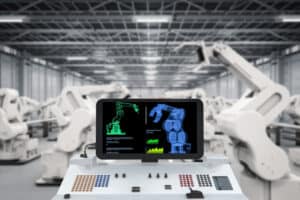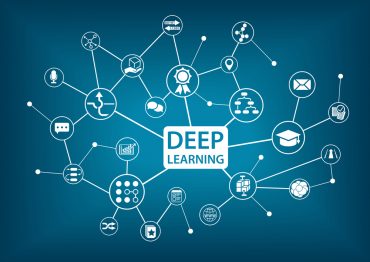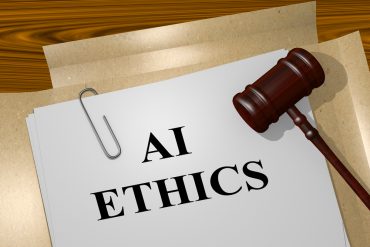
AI helps smart manufacturers use the vast amounts of data being generated from IoT devices and smart sensors throughout their factory.
For years, manufacturers have embraced IoT, analytics, and automation in their transition to smart manufacturing. But increasingly, those technologies are being complemented with the use of artificial intelligence (AI).
To that point, much of the expected growth in smart manufacturing will be driven by the integration of these advanced technologies, according to several recent reports. For example, an August MarketsandMarkets report noted that the smart manufacturing market is currently valued at $108.9 billion, and it is projected to reach $241 billion by 2028, which represents a 17.2% CAGR over that period.
One segment of the market, the use of digital twins in manufacturing, is expected to have the highest CAGR during the same period. “As industries prioritize efficiency, predictive maintenance, and innovation, digital twins offer insights that enhance production, minimize downtime, and refine product development. This surge in digital twin utilization reflects its integral role in shaping the future of smart manufacturing,” according to a statement release announcing the report findings.
Synergies and smart manufacturing innovations from AI abound
AI use in digital twins is just the tip of the iceberg when it comes to the technology’s use in smart manufacturing.
Increasingly, AI and machine learning (ML) are being used to help make smarter decisions and give manufacturers the ability to react to changing conditions (in the market and on production lines). In both cases (making smarter decisions and reacting to changing conditions), AI helps manufacturers use the vast amounts of data being generated from IoT devices and smart sensors throughout the factory.
Some auto manufacturers are using AI to spot equipment problems in the making and to guide predictive maintenance operations. Others are using AI to optimize operations and production schedules. Many are integrating AI and ML into their workflows to help develop more intelligent automation throughout a plant.
There are many examples of how AI helps in these areas. As we noted in Smart Factory Modernization Improves Efficiency:
Audi is using AI in production in several capacities. First, AI monitors body construction at the Neckarsulm site to ensure quality spot welds. Human workers no longer have to check every single weld and can focus only on problems. At its Ingolstadt press shop, AI is checking the quality of pressed parts to monitor for cracking, yet another area where human workers no longer take on the bulk of quality control.
See also: Researchers Amplify Impact of Generative AI in Auto Design
Enhancing smart manufacturing operations
AI is also being used to complement operations and processes already in place.
A good example is AI’s use in robotic systems. While robotic systems have been used to automate warehouse and production line processes for years (even decades in some cases), AI can add significant capabilities that take such systems to new levels.
For example, AI-enabled vision can help robotic systems identify objects in real time. That proves very useful in handling and assembling components on production lines. Additionally, AI can add autonomous mobility to help robotic systems move about a warehouse or factory floor without requiring the installation of tracks or the development of pre-programmed paths.
Such systems could also perform more complicated work on a production line. In another application, a production line could use AI-enabled cameras to spot defects in products faster and perhaps more accurately than human inspectors.
Internal virtual assistants and chatbots
The biggest AI news this year has been the introduction and explosive adoption of ChatGPT, Large Language Models (LLMs), and generative AI. Two of the most common uses of these technologies are search and conversation.
Smart manufacturers can make use of generative AI to aid factory and production line workers. For instance, a manufacturer might provide such workers with virtual assistants or chatbots to help look up information, answer questions, or troubleshoot problems. All such applications can help increase operational efficiency.
Beyond the factory walls
Artificial intelligence can help optimize supply chains and spare parts inventory for equipment on production lines and stock levels of raw materials used in the final products.
In the case of equipment parts, an AI-enabled predictive maintenance solution could be integrated with an ERP. Such a system would make certain required spare parts are in stock when needed, thus avoiding unnecessary downtime waiting for a critical part to ship. It also guarantees parts are not overstocked spare parts, thus reducing the need for excess storage capacity to house the parts. This also reduces the chance of having outdated parts.
Similar benefits can be found when AI is used to forecast stock inventory needs. A smart manufacturer could use that information to fine-tune a just-in-time delivery model, optimizing stock levels and reducing inventory costs.









